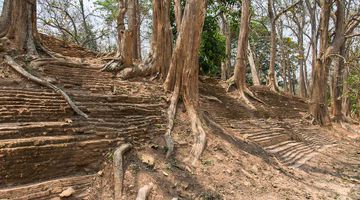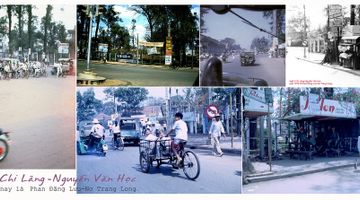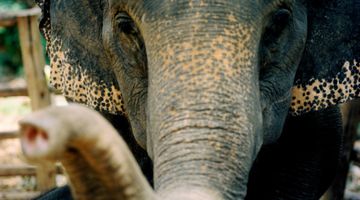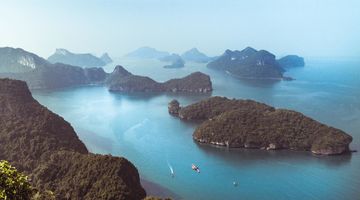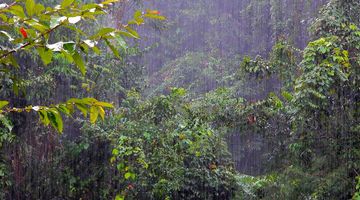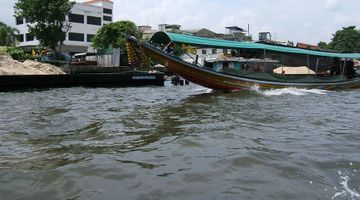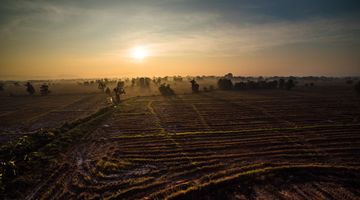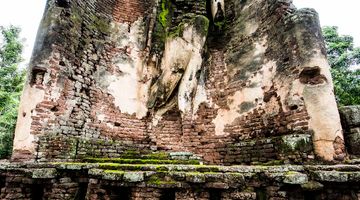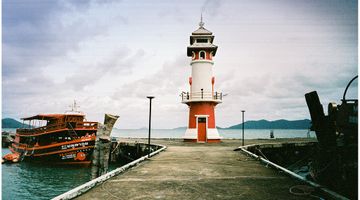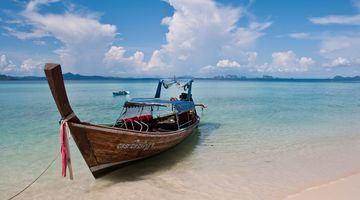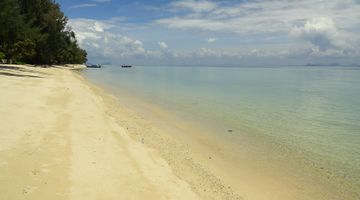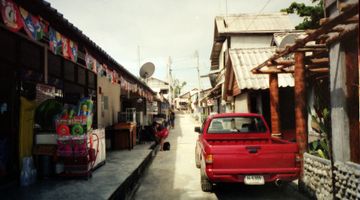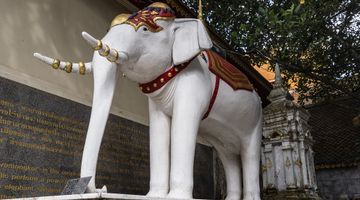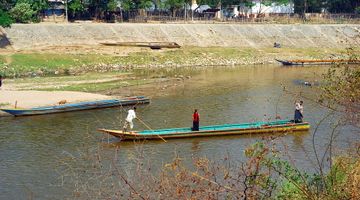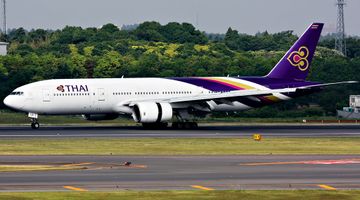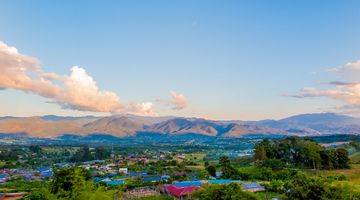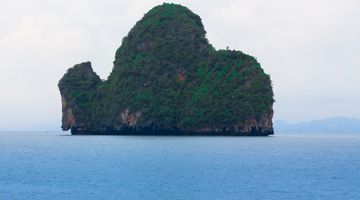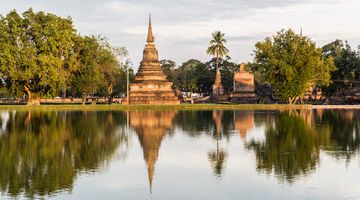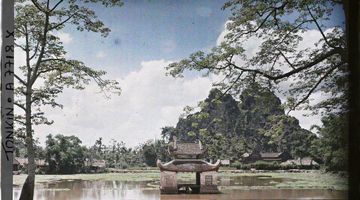Climate, Weather and the Best Time to Visit Thailand
Thailand is one of Southeast Asia’s most popular and alluring destinations. Famed for its glorious beaches and beautiful islands, enticing wildlife-filled jungles, rich culture, fascinating landmarks, lively markets, and delicious cuisine, there is certainly something to please almost everyone.
Although the nation offers plenty of diversity all year round, knowing when to visit Thailand can really make a lot of difference when it comes to having the perfect vacation.
Thailand has a tropical climate. This means that temperatures are often high, and conditions are usually sunny and fairly humid.
How Many Seasons Does Thailand Have?
The seasons in Thailand vary as to the exact part of the country. Southern Thailand has just two seasons: wet (rainy) and dry (hot). The timings of these seasons do, however, vary between the Andaman Coast and the Gulf Coast. Other parts of the country, generally Bangkok and areas north of the capital, have three seasons: hot, cool, and rainy.
Seasons are determined by the average temperatures and the general weather conditions, including the average amount of rainfall and the occurrence of monsoons and heavy storms.
Wet & Dry
The Andaman Coast enjoys the dry season from November to March, while the eastern side of the peninsula, the Gulf Coast, is dry between January and August. Rainy season on the Andaman Coast is from April to October, and between September and December along the Gulf Coast.
Hot, Cool & Rainy
The regions of Central Thailand (including Western Thailand), Northern Thailand, Eastern Thailand, and Northeastern Thailand (also known as Isan) have three seasons. The rainy season is typically from May to mid-November. It is usually dry from the middle of November to May. Mid-November to February is the cool season, which is followed by the March-to-May hot season. There can be slight variations regarding the exact months depending on the region.
Rainy, or Wet Season in Thailand
What to Expect
The rainy, or wet, season is, as the name implies, the wettest time of the year in a particular area. It may also be referred to as the monsoon season. Monsoon is the name given to a strong wind that blows at certain times of the year in South and Southeast Asia.
This season is characterized by heavy rains and thunderstorms. Lightning flashes through the skies and the booming sounds of thunder can be quite a shock for visitors who are not used to such weather.
In coastal areas, the sea can be exceptionally choppy.
Don’t fall into the trap, though, of thinking it rains all the time during the rainy season; it doesn’t. While downpours are common most days, they often last for just a couple of hours.
While some days see cloudy skies and overcast conditions, there are also plenty of sunny periods where the weather shouldn’t put too much of a dampener on a vacation. Conditions are often, however, more humid, and there are more mosquitoes to contend with.
Rainy Season is Great For:
Sightseeing and city tours are possible in most parts of the country during the rainy season, though do keep in mind that flooding is common in some places.
Visiting national parks depends on the particular park; some are all but off limits during the rainy season, as conditions make them unsafe for visitors, whereas others are best visited at this time while at their most lush.
Waterfalls are at their fullest, though access can be difficult.
Rainy Season is Not Great For:
This is not the best time of year to enjoy Thailand’s islands, though plenty of tourists do have a great trip. Ferries and boats do not operate in dangerous conditions.
Dry, or Hot Season in Thailand
What to Expect
The southern dry&hot season is, as you would expect, the driest time of year. Rain showers can still occur, but they are rare. Seas are calmer, humidity levels are lower, and most days are hot and sunny.
In areas where there are three seasons, the hot season sees the highest temperatures, the driest conditions, and the most hours of sunlight. Skies are typically clear. The scorching temperatures in the hottest months can be uncomfortable for many. Thailand’s more northern beaches can be especially tempting at this time, with visitors cooling down in the sea and relaxing in the shade of a parasol or tree.
Hot Season is Great For:
This is the best time to visit many of Thailand’s islands and beaches.
Underwater visibility is best during this season, making it the ideal time for snorkelling and diving.
Hot Season is Not Great For:
It can get unbearably hot in cities. Sightseeing during the day can proof a bad idea. In any case, use sun scree, a hat and keep yourself hydratated.
Cold Season in Thailand
What to Expect
The cool season is sometimes also referred to as the cold season. With the exception of mountainous areas and certain other parts of the country, it usually isn’t actually cool or particularly cool. It is, however, cooler than during the hot season, thanks to the (non-rain-bringing) winds of the northeast monsoon. Clear skies, plenty of sunshine, and warm temperatures make this one of Thailand’s peak travel periods.
Cold Season is Great For:
The cooler temperatures make this a prime time for trekking and exploring Thailand’s national parks, and waterfalls should still be full at the start of the cool season.
Days spent wandering around cities and sightseeing are also often more pleasant at this time of year.
The weather is warm and sunny enough to enjoy Thailand’s beautiful beaches and islands.
Regions in Thailand: the Best Time to Go by Month
Central part
Highlights of Central Thailand include the frenetic capital city of Bangkok, the ancient former capital of Ayutthaya, monkey-ridden Lopburi, and Ang Thong, which is home to the largest Buddha statue in Thailand.
April and May are the hottest months, with average temperatures hovering at around 30-31°C. Temperatures can soar to as high as 34-35°C.
December and January are usually the coolest months, with an average temperature of 25°C. Night time lows can dip to 21°C. Other months have little variation in temperature terms, with the thermometer typically showing between 27°C and 29°C.
The heaviest rains are usually in August and September.
Although the region offers plenty of diversity all throughout the year, the best time to visit is generally outside of May, August, and September. The annual Songkran festival falls in April so, despite the heat, this can be a great time to visit the region and join in with the celebrations for Thai New Year.
Western part
Towards the west, Kanchanaburi is popular with war-history enthusiasts and people who enjoy spending time outdoors. If you’re sticking to attractions in the main town, Kanchanaburi is lovely at any time of the year. If, however, you plan to incorporate waterfalls, such as the splendid Erawan Waterfall, and mountain treks into your itinerary, the rainy season can make travelling through the area difficult.
Eastern Seaboard
On the eastern Gulf, Pattaya sees relatively little rain and temperatures are often pleasant. Even during the rainy season, downpours don’t usually last for long. The ocean breezes in the cool season can be pleasant. During the hot season, temperatures can rise to 33°C.
Other parts of Eastern Thailand can see scorching hot-season temperatures in the hottest months of March and April, with temperatures sometimes reaching into the low 40s.
Farther down the eastern Gulf of Thailand, the hot and cool seasons are ideal for visiting the island of Koh Chang. During the cool season, temperatures are warm enough to bask on the beaches and soak up the sun, yet cool enough to make exploring the mountainous interior of the island comfortable. Waterfalls are usually at their most impressive right after the rainy season, at the start of the cool season, too. The beaches entice many during the hot season. During the rainy season, ferry services to and from the island can be cancelled due to adverse weather conditions. The waters can be rough and dangerous riptides may occur.
The upper part of the Gulf
At the western side of the Gulf of Thailand (the eastern side of the peninsula), Hua Hin and Cha Am are popular mainland beach resorts.
The cool season temperatures are between the high 20s and low 30s, though evenings can be chilly; lows at night time are around 24°C.
The March-to-June hot season has clear, sunny skies and temperatures in the low 30s. The coast sees relatively few heavy downpours during the rainy season, and humidity is often lower than in other parts of the country thanks to the sea breezes.
Almost any time of year is great for a visit to this part of Thailand.
As you head farther south you move closer to the Equator. Conditions start to really feel tropical.
The Lower part of the Gulf
Moving down into Surat Thani, there are several popular islands in the Gulf of Thailand. These include Koh Samui, known for its luxury spas and gold courses, the diving jewel of Koh Tao, and Koh Phangan, famous for its hedonistic outlook and exhilarating parties.
Temperatures are fairly constant on the islands all through the year. Yearly averages are 26-28°C, with highs of around 32+°C and lows of around 25°C.
The dry season attracts the most tourists, and the beaches can be packed. This is the best time for those who want to explore the underwater world.
The rainy season sees fewer crowds and prices are often lower. That said, some places shut down completely in the low season, so facilities are more limited than during the dry season. The rains can be strong and frequent, though they often do not last for long.
The best time to visit the islands is generally in the dry season, though there is still much merit in visiting during the rainy season.
The Andaman Coast
On the western side of the peninsula, along the Andaman Coast, Phuket is one of Thailand’s most popular tourist destinations. The rainiest months are typically September and October, though the rainy season runs from May through to October. Heavy rains coupled with high humidity and grey skies can deter a lot of travellers. Those looking for smaller tourist numbers and lower prices may enjoy this period more, though.
Although temperatures are fairly consistent at all times in Phuket, temperatures do rise somewhat in March, April, and May. The average temperature during these months is 29°C, with highs of 34+°C. Plenty of sun is all but guaranteed in the dry season. It is rare for yearly temperatures in Phuket to fall below 24°C, and the lower conditions are usually at night. November to February is generally considered the best time to visit Phuket.
The stunning national park of Khao Sok, in Southern Thailand, is open all through the year. Rain is possible at any time, and showers are often unexpected. In the middle of the peninsula, the park can get rains from both the eastern and western monsoons. Rains usually come and go quickly though, leaving behind clear blue skies and bright sunshine.
The seasons in Krabi, along with popular islands of Koh Phi Phi and Koh Lanta, are similar to those in Phuket. September and October see the most rain, and the hottest months are April, May, September, and October. Many visitors prefer to visit between November and March, when the temperatures are a little lower, a sea breeze helps to keep the air moving, and the temperatures are a little lower.
Deep South
In Southern Thailand, major places of interest include Trang with its beautiful islands, the large city of Hat Yai, and Saturn, which is home to the increasingly popular island of Koh Lipe. Hot temperatures and humidity can be expected for most of the year.
Northern Thailand
Northern Thailand is a land of temperature and weather extremes. Being farther away from the ocean, however, does mean that humidity is generally lower than in the nation’s more southern areas. Humidity can still, though, occur. Average temperatures are often lower than in Central, Eastern, and Southern Thailand too. Many visitors are drawn all year round to the undulating mountains, the abundance of waterfalls, the lush jungles, the rich culture, and the laid-back lifestyle.
The hottest months are from February to June. Dry and sometimes dusty, the landscapes can look rather parched and some of the region’s waterfalls are dry. While average temperatures during the hot season are usually in the low 30s, the mercury can soar to the early 40s on some days.
In Chiang Mai, this is also the time that is sometimes referred to as the smoky season or burning season. A combination of agricultural practices whereby farmers burn the fields ready to plant the next crop, vehicle pollution, and little rainfall makes smog hang thick in the air. This can be an unpleasant time to explore the city.
December to February, with its dry conditions and fairly cool temperatures, are the most popular months for visiting Chiang Mai, Chiang Rai, and Mae Hong Son. Night-time temperatures can plummet below 10°C, especially in the mountains, so visitors will need to pack warm clothes. The daytime temperatures are often in the low 30s, providing terrific conditions for trekking in the wildlife-rich jungles, swimming in waterfalls, and visiting remote hill tribes. Landscapes are still verdant and lush following the rainy period. Motorbike adventures are popular in Northern Thailand, and this is usually the safest time for a road trip.
The rainy season in Northern Thailand offers great views of rolling countryside complete in all its green glory. Sudden downpours and the increased risk of flash flooding and landslides in some areas can present dangers though. Rains usually pass quickly, but being caught in the jungle or on a mountainous road on a scooter definitely isn’t fun. Those looking to enjoy water-based activities, such as rafting, will, however, find the rivers at their fullest during the rainy season. The rains present few problems for tourists who are primarily interested in temple hopping and visiting cultural attractions.
Northeastern Thailand (Isan)
Northeastern Thailand is also often referred to as Isan. It is the nation’s most rural region and a place that sees relatively few international visitors when compared to other parts of the country. The distinct culture, peaceful vibe, interesting attractions, and beautiful nature make for a fantastic trip for those who want to explore more of the Land of Smiles.
Highlights of the region include Nakhon Ratchasima and Khao Yai National Park, Buriram with its splendid Angkor-era ruins, and the border areas of Mukdahan and Nong Khai, where people can easily cross between Thailand and neighbouring Laos. The largely flat terrain is criss-crossed by rivers and small waterfalls. The seasons’ times are similar as in Central Thailand: rainy between May and November, cool from November to February, and hot from March to May.
The agricultural lands, waterfalls, and rivers are typically at their most attractive in the rainy season. The rivers can, and often do, swell at this time though, which can lead to severe flooding. The start of the cool season is often the best time to visit; there is little chance of rain, floods have dried out, and the landscapes are still beautifully green and fertile.
January is the coolest month, with an average temperature of 23°C. Other months in the cool season are usually between 25°C and 27°C. Clear and sunny weather makes exploring the region fun.
People wanting to experience the novelty of true cold in Thailand should head to Loei province during the cool season. It is the only place in Thailand where temperatures routinely fall below zero degrees.
The March to May hot season can be too hot for some visitors, with temperatures reaching 40°C, and sometimes even higher. Humidity levels rise too. The fields can look dry and parched, and water levels dip in the rivers and waterfalls. Some water features have no water. This is the best time though to visit the curious natural attraction of Sam Phan Bok. Located in Ubon Ratchathani province, the water levels in the mighty Mekong River drop so much, allowing you to walk on the dry riverbed. Marvel at numerous gaping holes created by the swirling waters and discover lunar-like terrains. The area is referred to as the Grand Canyon of Thailand.
Travel Tips – What to Pack
Protect yourself from Sun & Heat
Sunscreen and a hat are recommended at all times of the year, though especially so during the hot season.
Don’t forget to reapply sunscreen regularly too, particularly when dipping in and out of the ocean.
It’s also recommended to carry a thin scarf or sarong to cover up to prevent sun burn.
Drink plenty of fluids to prevent dehydration.
A small handheld fan can provide welcome relief in the heat, and an umbrella is a terrific way to take the shade with you when sightseeing.
Other useful items to pack for a trip to Thailand in the hot season include moisturizing lotion, lip balm, and after sun cream.
And, don’t forget your bathing suit! Even if you’re not planning to hit the beaches and / or islands, you may come across a delightful waterfall or river where swimming is possible, and a number of accommodations around the country have swimming pools that can be very inviting in the heat.
Get Ready for Wet Season Annoyances
Mosquito repellent is essential during the rainy season.
A loose-fitting light-weight long-sleeved shirt and thin cotton pants can help to keep mosquitoes at bay during the evenings.
Antihistamine cream can relieve the itch of bites.
If you’re planning on exploring the jungles, leech socks are recommended during the rainy season.
A breathable waterproof jacket can also make you more comfortable.
An umbrella is ideal for keeping dry in short showers when sightseeing, and plastic rain ponchos (readily available for a low price in many convenience stores around Thailand) are great for when riding a scooter or for times when you want to keep both hands free.
Backpackers may want to invest in a suitable waterproof cover for their bags.
Although commonly taken to the beach, waterproof bags can be very handy in the rainy season for protecting essential documents, small electronic devices, and similar.
Sandals that fasten securely, as opposed to flip flops, can help to prevent slips and trips on slick surfaces.
Do Not Get Cold in Thailand
Packing at least one sweater or light-weight jacket is recommended for any trip to Thailand.
While you will almost certainly be grateful of this during the cool season, air-conditioned transportation can feel cold, even during the hottest months.
Depending on your planned destination and activities, suggested items to pack for a visit to Thailand during the cool season include pants and long-sleeved tops for crisp evenings, a pair of socks, and clothes that can be worn in layers.
...
Thailand presents many wonderful experiences all year round; research your chosen destination and activities to make the most of your vacation and have a terrific trip to the Land of Smiles.

